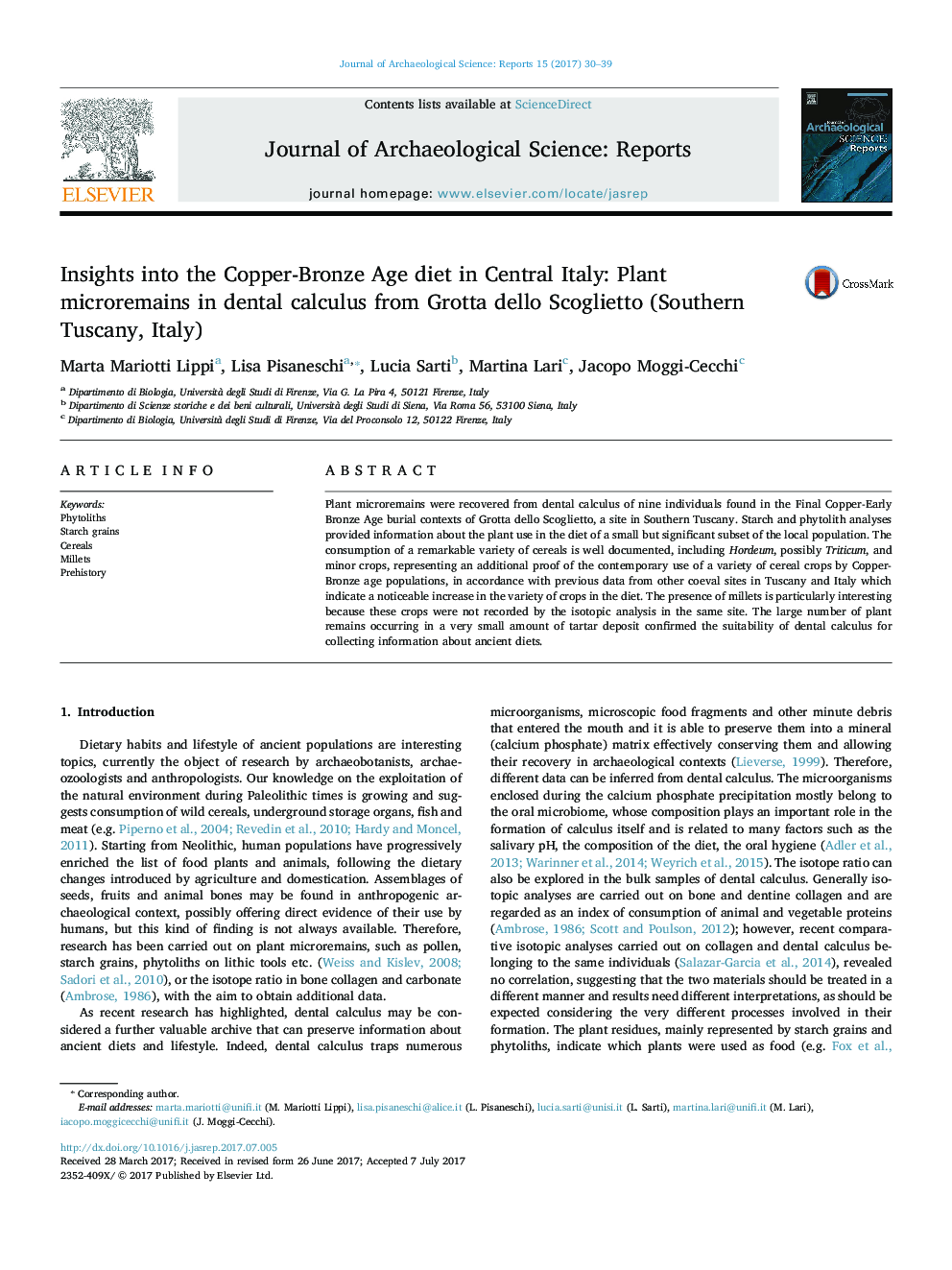| Article ID | Journal | Published Year | Pages | File Type |
|---|---|---|---|---|
| 5112271 | Journal of Archaeological Science: Reports | 2017 | 10 Pages |
Abstract
Plant microremains were recovered from dental calculus of nine individuals found in the Final Copper-Early Bronze Age burial contexts of Grotta dello Scoglietto, a site in Southern Tuscany. Starch and phytolith analyses provided information about the plant use in the diet of a small but significant subset of the local population. The consumption of a remarkable variety of cereals is well documented, including Hordeum, possibly Triticum, and minor crops, representing an additional proof of the contemporary use of a variety of cereal crops by Copper-Bronze age populations, in accordance with previous data from other coeval sites in Tuscany and Italy which indicate a noticeable increase in the variety of crops in the diet. The presence of millets is particularly interesting because these crops were not recorded by the isotopic analysis in the same site. The large number of plant remains occurring in a very small amount of tartar deposit confirmed the suitability of dental calculus for collecting information about ancient diets.
Related Topics
Social Sciences and Humanities
Arts and Humanities
History
Authors
Marta Mariotti Lippi, Lisa Pisaneschi, Lucia Sarti, Martina Lari, Jacopo Moggi-Cecchi,
